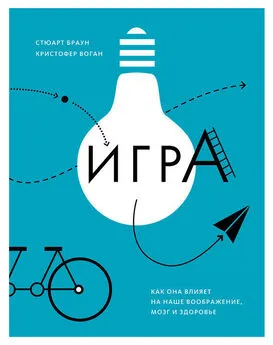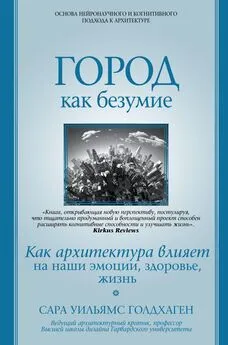Виктория Уильямсон - Мы – это музыка. Как музыка влияет на наш мозг, здоровье и жизнь в целом
- Название:Мы – это музыка. Как музыка влияет на наш мозг, здоровье и жизнь в целом
- Автор:
- Жанр:
- Издательство:Манн, Иванов и Фербер
- Год:2016
- Город:Москва
- ISBN:978-5-00057-660-1
- Рейтинг:
- Избранное:Добавить в избранное
-
Отзывы:
-
Ваша оценка:
Виктория Уильямсон - Мы – это музыка. Как музыка влияет на наш мозг, здоровье и жизнь в целом краткое содержание
Прочтение этой книги, возможно, даст идеи, как правильно применить силу музыки в ваших обстоятельствах.
Эта книга будет интересна в первую очередь тем, кто интересуется влиянием музыки на человеческую психику и физиологию.
На русском языке публикуется впервые.
Мы – это музыка. Как музыка влияет на наш мозг, здоровье и жизнь в целом - читать онлайн бесплатно полную версию (весь текст целиком)
Интервал:
Закладка:
129
Westerhausen, R., et al. (2006), ‘Interhemispheric transfer time and structural properties of the corpus callosum’, Neuroscience Letters, 409 (2), 140–145. Patston, L.L.M, et al. (2007), ‘The unusual symmetry of musicians: Musicians have equilateral interhemispheric transfer for visual information’, Neuropsychologia, 45 (9), 2059–2065.
130
Ridding, M.C., Brouwer, B., and Nordstrom, M.A. (2000), ‘Reduced interhemispheric inhibition in musicians’, Experimental Brain Research, 133, 249–253.
131
Bengtsson, S.L., et al. (2005), ‘Extensive piano practicing has regionally specific effects on white matter development’, Nature Neurosciences, 8, 1148–1150.
132
Halwani, G.F., Loui, P., Rueber, T, and Schlaug, G. (2011), ‘Effects of practice and experience on the arcuate fasciculus: comparing singers, instrumentalists, and non-musicians’, Frontiers in Psychology, 2, 156.
133
Stewart, L. (2008), ‘Do musicians have different brains?’, Clinical medicine, 8 (3), 304–308.
134
Ragert, P., Schmidt, A., Altenmüller, E, and Dinse, H.R. (2004), ‘Superior tactile performance and learning in professional pianists: evidence for meta-plasticity in musicians’, European Journal of Neuroscience, 19 (2), 473–478.
135
Watanabe, D., Savion-Lemieux, T., and Penhune, V.B. (2007), ‘The effect of early musical training on adult motor performance: Evidence for a sensitive period in motor learning’, Experimental Brain Research, 176 (2), 332–340.
136
Amunts, K., et al. (1997), ‘Motor cortex and hand motor skills: Structural compliance in the human brain’, Human Brain Mapping, 5 (3), 206–215.
137
Bangert, M., and Schlaug, G. (2006), ‘Specialization of the specialized in features of external human brain morphology’, European Journal of Neuroscience, 24 (6), 1832–1834.
138
Pantev, C., Engelien, A., Candia, V., and Elbert, T. (2001), ‘Representational Cortex in Musicians: Plastic Alterations in Response to Musical Practice’, Annals of the New York Academy of Sciences, 930 (1), 300–314.
139
Elbert, T., et al. (1995), ‘Increased cortical representation of the fingers of the left hand in string players’, Science, 270 (5234), 305–307.
140
Schneider, P., et al. (2002), ‘Morphology of Heschl’s gyrus reflects enhanced activation in the auditory cortex of musicians’, Nature Neuroscience, 5 (7), 688–694.
141
Gaab, N., et al. (2005), ‘Neural correlates of rapid spectrotemporal processing in musicians and nonmusicians’, Annals of the New York Academy of Sciences, 1060, 82–88. Musacchia, G., Strait, D., and Kraus, N. (2008), ‘Relationships between behavior, brainstem and cortical encoding of seen and heard speech in musicians and nonmusicians’, Hearing Research, 241 (1–2), 34–42.
142
Strait, D., and Kraus, N. (2011), ‘Playing music for a smarter ear: cognitive, perceptual and neurobiological evidence’, Music Perception, 29 (2), 133–146.
143
Pantev, C., et al. (1998), ‘Increased auditory cortical representation in musicians’, Nature, 392 (6678), 811–814.
144
Pantev, C., et al. (2001), ‘Timbre-specific enhancement of auditory cortical representations in musicians’, Neuroreport, 12 (1), 169–174.
145
Strait, D.L., et al. (2012), ‘Specialization among the specialized: auditory brainstem function is tuned in to timbre’, Cortex, 48 (3), 360–362.
146
Wong, P.C.M., et al. (2007), ‘Musical Experience Shapes Human Brainstem Encoding of Linguistic Pitch Patterns’, Nature Neuroscience, 10 (4), 420–422.
147
Slevc, L.R., and Miyake, A. (2006), ‘Individual differences in second language proficiency: Does musical ability matter?’, Psychological Science, 17 (8), 675–681.
148
Parbery-Clark, A., Strait, D.L., and Kraus, N. (2011), ‘Context-dependent encoding in the auditory brainstem subserves enhanced speech-in-noise perception in musicians’, Neuropsychologia, 49 (12), 3338–3345.
149
Parbery-Clark, A., Tierney, A., Strait, D.L., and Kraus, N. (2012), ‘Musicians have fine-tuned neural distinction of speech syllables’, Neuroscience, 219, 111–119.
150
White-Schwoch, T., et al. (2013), ‘Older adults benefit from music training early in life: biological evidence for long-term training-driven plasticity’, Journal of Neuroscience, 33 (45), 17667–17674.
151
Haueisen, J., and Knösche, T.R. (2001), ‘Involuntary Motor Activation in Pianists Evoked by Music Perception’, Journal of Cognitive Neuroscience, 13 (6), 786–792.
152
Jakobson, L.S., Lewycky, S.T., Kilgour, A.R., and Stoesz, B.M. (2008), ‘Memory for verbal and visual material in highly trained musicians’, Music Perception, 26 (1), 41–55. Ho, Y., Cheung, M., and Chan, A.S. (2003), ‘Music Training Improves Verbal but Not Visual Memory: Cross-Sectional and Longitudinal Explorations in Children’, Neuropsychology, 17 (3), 439–450. Franklin, M.S., et al. (2008), ‘The effects of musical training on verbal memory’, Psychology of Music, 36 (3), 353–365.
153
Watanabe, D., Savion-Lemieux, T., and Penhune, V.B. (2007), ‘The effect of early musical training on adult motor performance: evidence for a sensitive period in motor learning’, Experimental Brain Research, 176 (2), 332–340. Meister et al. (2005), ‘Effects of long-term practice and task complexity in musicians and nonmusicians performing simple and complex motor tasks: Implications for cortical motor organization’, Human Brain Mapping, 25 (3), 345–352.
154
Zatorre, R.J. (2013), ‘Predispositions and Plasticity in Music and Speech Learning: Neural Correlates and Implications’, Science, 342 (6158), 585–589.
155
Stewart, L. (2011), ‘Characterizing Congenital Amusia’, Quarterly Journal of Experimental Psychology, 64 (4), 625–638.
156
Cuddy, L.L., Balkwill, L.-L., Peretz, I., and Holden, R.R. (2005), ‘Musical difficulties are rare: A study of “tone deafness” among university students’, Annals of the New York Academy of Science, 1060, 311–324.
157
Sloboda, J.A., Wise, K.J., and Peretz, I. (2005), ‘Quantifying tone deafness in the general population’, The Neurosciences and Music II: From Perception to Performance (Annals of the New York Academy of Sciences), 1060, 255–261.
158
Wise, K.J., and Sloboda, J.A. (2008), ‘Establishing an empirical profile of self-defined “tone deafness”: Perception, singing performance and self-assessment’, Musicae Scientiae, 12, 3–23.
159
Anderson, S., et al. (2012), ‘Congenital amusia: is there potential for learning? A study of the effects of singing interventions on pitch perception and production of those with congenital amusia’, Annals of the New York Academy of Sciences. 1252, 345–353.
160
Loui, P., Guenther, F.H., Mathys, C, and Schlaug, G. (2008), ‘Action-perception mismatch in tone-deafness’, Current Biology, 18 (8), R331-R332. Williamson, V.J., et al. (2012), ‘Perception and action de-coupling in congenital amusia: Sensitivity to task demands’, Neuropsychologia, 50 (1), 172–180.
161
Peretz, I., et al. (2002), ‘Congenital Amusia: a disorder of fine-grained pitch discrimination’, Neuron, 33 (2), 185–191.
162
Lebrun, M.-A., et al. (2012), ‘Congenital amusia in childhood: A case study’, Cortex, 48 (6), 683–688.
163
Kalmus, H., and Fry, D.B. (1980), ‘On tune deafness (dysmelodia): frequency, development, genetics and musical background’, Annals of Human Genetics, 43 (4), 369–382.
164
Henry, M.J., and McAuley, J.D. (2010), ‘On the Prevalence of Congenital Amusia’, Music Perception, 27 (5), 413–418.
165
Omigie, D., Müllensiefen, D., and Stewart, L., (2013) ‘The experience of music in congenital amusia’, Music Perception, 30 (1), 1–18.
166
McDonald, C., and Stewart, L. (2008), ‘Uses and functions of music in congenital amusia’, Music Perception, 25 (4), 345–355.
167
Williamson, V.J., and Stewart, L. (2010), ‘Memory for pitch in Congenital Amusia: Beyond a fine-grained pitch perception problem’, Memory, 18 (6), 657–669.
168
Loui, P., Alsop, D., and Schlaug, G. (2009), ‘Tone-Deafness: a Disconnection Syndrome?’, Journal of Neuroscience, 29 (33), 10215–10220.
169
Peretz, I., Brattico, E., Järvenpää, M., and Tervaniemi, M. (2009), ‘The amusic brain: in tune, out of key, and unaware’, Brain, 132 (5), 1277–1286. Omigie, D., Pearce, M., Williamson, V.J., and Stewart, L. (2013), ‘Electrophysiological correlates of melodic processing in congenital amusia’, Neuropsychologia, 51 (9),1749–1762.
170
Moreau, P., Jolicoeur, P., and Peretz, I. (2009), Automatic brain responses to pitch changes in congenital amusia’, Annals of the New York Academy of Sciences, 1169, 191–194.
171
Omigie, D., Pearce, M.T., and Stewart, L. (2012), ‘Tracking of pitch probabilities in congenital amusia’, Neuropsychologia, 50 (7), 1483–1493.
172
http://faculty.washington.edu/losterho/DemorestXOsterhout_2012.pdf.
173
Egermann, H., Fernando, N., Chuen, L., and McAdams, S. (in preparation), ‘Universal psychophysiological response to music – Comparing Western listeners to Congolese Pygmies’.
174
Demorest, S.M., Morrison, S.J., Beken, M.N., and Jungbluth, D. (2008), ‘Lost in translation: an enculturation effect in music memory performance’, Music Perception, 25, 213–223. Morrison, S.J., Demorest, S.M., and Stambaugh, L.A. (2008), ‘Enculturation effects in music cognition: the role of age and music complexity’, Journal of Research in Music Education, 56 (2), 118–129.
175
Demorest, S.M., et al. (2010), ‘Music comprehension among Western and Turkish listeners: FMRI investigation of an enculturation effect’, Social, Cognitive and Affective Neuroscience, 5 (2–3), 282–291. Demorest, S.M., and Osterhout, L.L. (2012), ‘ERP responses to cross-cultural melodic expectancy violations’, Annals of the New York Academy of Sciences, 1252, 152–157.
Читать дальшеИнтервал:
Закладка:


![Аре Бреан - Музыка и мозг [Как музыка влияет на эмоции, здоровье и интеллект]](/books/1068692/are-brean-muzyka-i-mozg-kak-muzyka-vliyaet-na-emoc.webp)


![Виктория Токарева - Тихая музыка за стеной [сборник]](/books/1102057/viktoriya-tokareva-tihaya-muzyka-za-stenoj-sbornik.webp)




